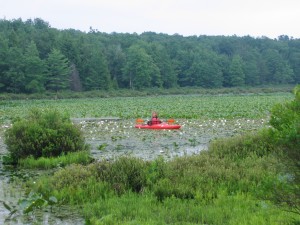
March 13, 2010
A map is a wonderful example of a visual health communication tool that tells us so much with so little text. The notion that “one picture is worth a thousand words” more than applies. Mike Mackert discusses a new resource, a map, on his health communication research blog [http://blog.healthcommunicationresearch.com/2010/03/new-interactive-tobacco-map.html]. If you click on his link to the overall map resource, you can use a slide bar on the right side to display which states have passed which laws and policies relating to tobacco and smoking. A great example of giving citizens and elected representatives points for comparison. From a communication perspective, several thoughts come to mind.
First, this is a great way to illustrate a role for visual literacy as part of health literacy. In terms of our understanding, when we have a visual image to tell us something, it saves us a step in our thinking and understanding. We don’t “think” in words. For example, when I say “snow,” you “think” an image — something likely related to your own experience with snow. You do not think “s”–“n”–“o”–“w” and try to get meaning from thinking and forming these letters in your head. When you see a picture of snow, there is an instant connection to your mental picture.
Second, this process I have just described assumes, of course, that you have experience with snow to draw on in forming a mental picture. I am reminded of a test that my daughter was given in order to start public school “early.’ Her birthday is September 14th. She thus missed the September 1 cutoff date. We requested that she be tested to start, as we felt that she was more than ready. The test validated our opinion. It also showed that she could not give a name to a picture of a “snow shovel.” She was born in Tucson, Arizona, and she had never seen snow let alone a snow shovel. So, she could not make a match in memory between the picture and a name or label for it.
So, third, any visual form used to communicate–and there are many in health communication, ranging from photos to bar graphs to pie charts to maps and more–depends on a user’s ability to connect experience and skill to an intended meaning. In the case of the map Dr. Mackert identifies, it aids the user who moves a mouse over the geography by having the names of different states ‘pop-up’ to help a user who may not remember the name or location of any given state. It offers a series of folder options across the top for a user to click on, so that there is not too much information presented in any one map. It does rely on a number of colors in the maps that are somewhat close on a color wheel and might be difficult for some users to distinguish. It also identifies two sources of the information at the bottom of the map that are not easily navigated to gain insights about the method used to gather the information. It is, however, what policymakers often seek to help them wade through all the mounds of information related to decision-making.
Maps can, therefore, tell us what is happening in one location as compared to another, giving us a location hypothesis or explanation for health and health care…

 March 1, 2010
March 1, 2010
 January 10, 2010
January 10, 2010